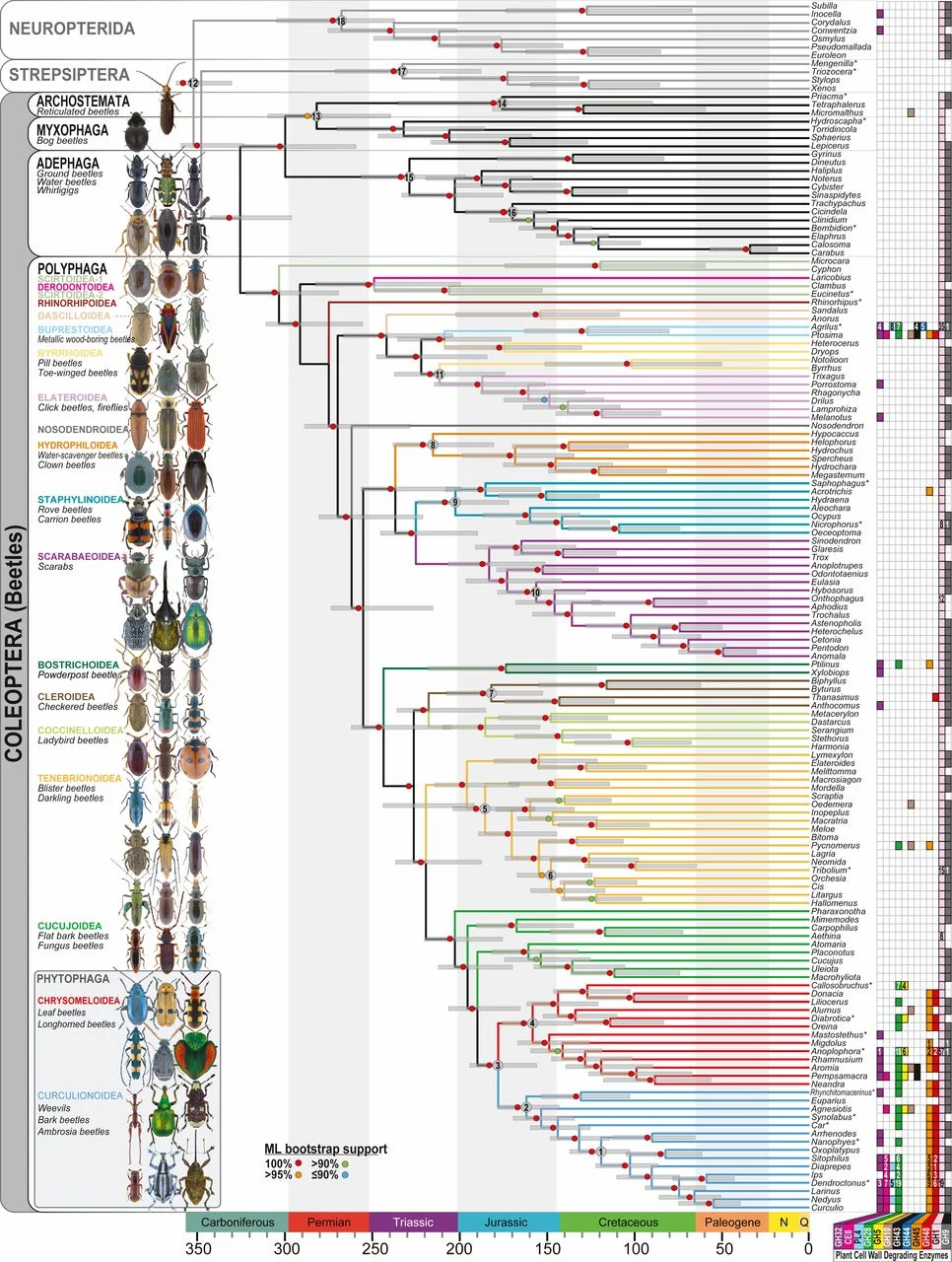진화 및 계통유전체학 연구실은 생물정보학을 활용한 계통유전체학 및 진화학 연구를 중심으로, 계통분류학, 생물다양성 및 환경변화에 대해 다각도로 연구합니다. 계통유전체학(Phylogenomics)은 Next Generation Sequencing (NGS) 데이터에서 계통분석에 사용이 가능한 수천 개의 유전자를 생물정보학(Bioinformatics) 기술을 활용해 추출하고, 이러한 유전자를 계통학적으로 비교 분석하는 학문입니다. 계통유전체학은 대량의 데이터를 활용해 분자생물학적인 계통진화 현상을 가시화하며, 계통수의 통계적 신뢰도의 비약적인 상승을 가능하게 만들어주는 차세대 유전체 분석 기술 기반 학문 중 하나입니다. 향후 많은 진화생물학적 수수께끼를 풀어나가는 과정에서 계통유전체학은 중요한 열쇠가 될 것입니다.
본 연구실은 계통유전체학 연구에서 더 나아가, 연구과정 생성되는 NGS 데이터에서 찾아낼 수 있는 각종 기능성 유전자를 계통유전체학 연구결과와 결합하여 생물군의 공생·진화 가설을 유전체학 수준에서 연구합니다. 종래의 계통도를 이용한 단순 추론 방식의 진화 가설 제시에서 발전하여, 실제 기능성 유전자의 분류군별 비교 분석을 통한 연구를 다양한 생명과학 분야 기술을 활용하며 연구하고 있습니다.
생물다양성은 진화의 중요한 증거 중 하나이며 이에 연관된 다양한 이야기들을 진화생물학적인 관점에서 풀어나가고 연구하는 것이 우리 연구실의 가장 중요한 과제 중 하나입니다. 생물다양성 연구를 통해 분류군을 뛰어넘어 주요한 진화생물학적인 현상을 발견해 나가는 것 또한 본 연구실의 주요한 연구 주제입니다. 미래 생물다양성 연구는 다양한 생물정보학, 분자생물학 및 전산화된 형태 분석 등이 종합적으로 활용되는 학문으로 발전할 것이며 이러한 변화를 주도할 수 있는 국제적인 연구를 진행합니다.

The technological advancement of bioinformatics and computational resources has initiated a new era in biosystematics and biodiversity research. The concept of biosystematics has been continually expanded and current systematic study now proceeds through a synthesis of genomics and bioinformatics such as phylogenomics. Shin lab is studying phylogenomics and evolution using various insect taxa. Our lab’s research program is across the spectrum of systematic study – from taxonomy to phylogenomics. The scientific curiosities in my lab are connected through taxonomic information from functional genomics and comparative genomics – to phylogenetic and phylogenomic comparisons that provide context for evolutionary hypothesis tests, classification, and macroevolutionary analyses.
Biodiversity is the primary source of evidence on evolution, and the description and explanation of biodiversity data, its patterns, causes and dynamics are the driving force behind our lab’s insect systematics research program. Biodiversity science is no longer limited within the boundaries of classification or taxonomy, but requires inputs from molecular biology, computational analysis, and digitalization databases. Morphological and biological observations provide evolutionary hypotheses that allow us to seek correlations in and between taxonomic groups.
